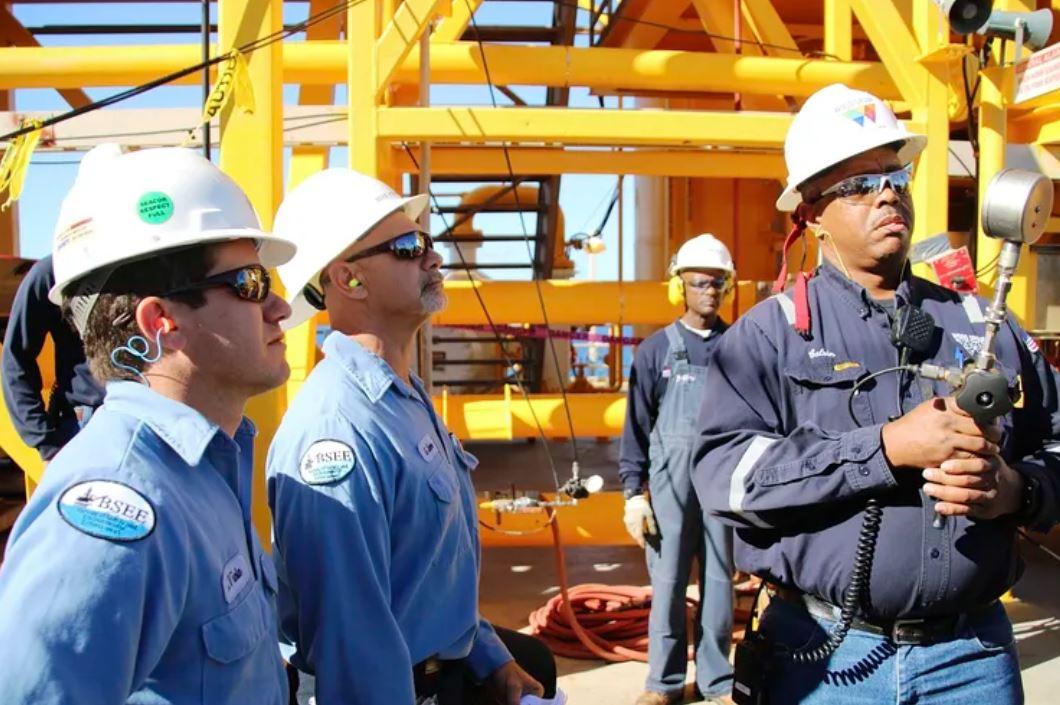When delving into the intricacies of apprentice-to-journeyman ratios, understanding the nuances of wage determination is vital before crews embark on federally funded construction projects.
Before your crews start a federally-funded project, you’ve likely heard about paying a set wage. Despite competitive rates and benefits, costs may seem high. However, hiring apprentices offers potential cost savings, as they are typically paid a percentage of full journeyman wages during training, often less than journeyman rates.
eBacon is an easy-to-use software platform to manage your time, HR, and payroll in one place. This gives you access to single-click certified reporting. GET A FREE DEMO OF eBACON TODAY.

Not All Workers are Apprentices
So, why not staff the entire job with apprentices and save yourself some money? Well, while employing apprentices isn’t a bad idea, there are still several rules that you should keep in mind with apprentice-to-journeyman ratios.
For example, you can’t just designate workers as apprentices because they’re less skilled than other crewmembers. The Department of Labor (DOL) says apprentices for prevailing wage jobs must be registered with a bona fide apprenticeship program or be in the first 90 days of probationary employment in a program certified by the Office of Apprenticeship (OA) or a State Apprenticeship Agency (SAA). Pre-apprentices, unregistered apprentices, helpers, or trainees are not the same and must be paid by the wage determination for their classification – not the apprentice percentage.

Learning the Differences: Journeyman-Apprentice Ratios
As if there wasn’t enough to think about with prevailing wage, you also need to keep a careful eye on your journeyman-apprentice ratios. The DOL says, “The allowable ratio of apprentices to journeymen on the job site in any craft classification shall not be greater than the ratio permitted to the contractor as to the entire work force under the registered program.”
This means contractors must refer to ratio rules established by the appropriate registered union apprenticeship program sponsor in the collective bargaining agreement.
The Inflation Reduction Act of 2022: Implications for Compliance
To add another layer, the Inflation Reduction Act of 2022 (IRA) provides tax incentives on clean energy jobs (solar, wind, electric vehicle stations, etc.) if prevailing wage and registered apprenticeship requirements are met. The IRA clarifies that:
- Apprentices must follow the apprentice wage rate and ratio standards of the project area of the job, meaning wages and ratios could differ from project to project.
- Contractors must keep meticulous records including copies of written requests for apprentices, records reflecting the daily ratio, payroll records for any apprentice work, and more.
- If there aren’t sufficient journeymen on site each day to meet program ratios, contractors must pay apprentices the full prevailing wage rate for the classification.
On the other hand, private jobs may be more flexible with apprentice ratios, but most contractors adopt the same balance they use on public jobs to maintain standards, efficiency, and safety.
Know Your Ratio: Construction Industry Insights
Typical ratios in the construction industry are 1:1, 1:3, meaning many states require one journeyman per one apprentice, then three journeymen must be employed before a second apprentice is hired. Keep in mind that could be different by state, trade, union, or residential or public job.

New York apprentice-to-journeyman ratios
For example, on prevailing wage jobs in New York, contractors currently must follow a 1:1, 1:4 ratio. So, there must be one journeyman for the first apprentice, and four additional journeymen for each additional apprentice.
Kansas apprentice-to-journeyman ratios
Kansas rules reflect a 1:1, 2:3 ratio – or one journeyman per first apprentice, followed by three journeymen for every two apprentices thereafter.
California apprentice-to-journeyman ratios
In California, apprentice hours must equal one straight time hour for every five straight time journeyman hours for each craft on public works or large-scale private jobs. So, 100 journeyman hours per project will require 20 apprentice hours in that same craft. However, the residential work ratio in California is simply 1:3.
Regardless of the ratio on your project, the DOL is clear it must be calculated by day. If you find that your crew doesn’t meet the standards, either an apprentice must be removed from the project or the apprentice must be treated as a journeyman and paid the full rate.
Monitor Compliance: Navigating Industry Changes
The fact of the matter is that apprentices benefit the future of the industry while saving you money. However, it takes research to determine apprenticeship rules for your particular jobs and constant examinations to stay in compliance. New collective bargaining agreements, updates to state or federal laws, or other factors such as the safety and welfare of apprentices could mean changes to the ratios or wages at any time.

Resources for Staying Compliant
Explore resources provided by the Department of Labor for apprenticeship programs. Discover how eBacon’s Apprentice Journeyman Hours Ratio Report assists in compliance monitoring, ensuring adherence to ratios specified by wage determination or jurisdiction.
You can learn more about apprenticeship programs here: https://www.apprenticeship.gov/apprenticeship-industries/construction or via the DOL here: https://www.dol.gov/agencies/eta

To help with your compliance, eBacon has developed a dedicated Apprentice Journeyman Hours Ratio Report within its software application [see above image]. Once the apprentice ratios are set per your wage determination or jurisdiction, the report lets you know if you comply should you hire apprentices.
Get Started with eBacon Today
FAQ for Apprentice to Journeyman Ratios
What is the relationship between a journeyman and an apprentice?
A journeyman has the authority to supervise apprentices and trades assistants but is restricted from securing contracts for work using that specific registration. Achieving journeyman-level qualification involves successfully finishing a structured apprenticeship, which is an educational program where a novice learns a skilled trade under the guidance of an experienced tradesperson.
What is the difference between an apprentice and a journeyman in the construction industry?
In the construction industry, the key distinction between an apprentice and a journeyman lies in their levels of expertise and responsibilities. An apprentice is an entry-level individual undergoing a formal training program to learn a skilled trade. They work under the supervision of a seasoned professional, gaining hands-on experience and theoretical knowledge. Apprenticeships are structured and serve as a pathway to mastery in a specific trade.
On the other hand, a journeyman has completed their apprenticeship, attaining a higher level of proficiency and qualification. Journeymen possess the skills and knowledge necessary to work independently in their trade. They can oversee the work of apprentices and trades assistants but are typically restricted from contracting for work independently using their registration. The journeyman stage represents a significant milestone in a construction professional’s career, signifying a higher level of competency and autonomy.
What is a contract between an apprentice and an employer in the construction industry?
A contract between an apprentice and an employer in the construction industry is a legally binding agreement that outlines the terms and conditions of the apprenticeship. This document establishes the mutual expectations, responsibilities, and obligations of both parties involved. Key elements typically included in such a contract are:
- Duration: Specifies the length of the apprenticeship program, outlining the start and end dates.
- Training Plan: Describes the structured training program that the apprentice will undergo, including both on-the-job training and any related classroom instruction.
- Wages and Benefits: Clearly define the compensation structure for the apprentice, detailing wages, benefits, and any potential increases throughout the apprenticeship.
- Work Schedule: Outlines the apprentice’s regular working hours, including any overtime expectations.
- Supervision and Mentorship: Designates the journeyman or experienced professional responsible for supervising and mentoring the apprentice.
- Performance Expectations: Set expectations for the apprentice’s job performance, learning progress, and any assessments or evaluations.
- Termination Conditions: Specifies the conditions under which either party can terminate the apprenticeship, including any notice periods.
- Confidentiality and Non-Disclosure: Addresses the handling of confidential information or trade secrets that the apprentice may be exposed to during the apprenticeship.
These contracts are essential for providing clarity and structure to the apprenticeship relationship, ensuring that both the apprentice and the employer understand their respective roles and commitments.
Personal Protective Equipment Standards: What You Need to Know About OSHA’s Smart New Guidelines
Working in construction can be demanding. Juggling intricate tasks while wearing bulky Personal Protective Equipment (PPE) can feel frustrating and…
Communication is Key: What You Need to Know NOW About HR Strategies and Prevailing Wage
Clear and consistent communication is the bedrock of any successful construction project. But on prevailing wage projects, where strict government…
Construction Workforce Shortages: How to Attract and Retain the Best Workers
Contractors, it’s time to acknowledge a tough reality: construction workforce shortages have been an enduring issue on job sites for…
FTC Non-Compete Clause Rule Changes for Construction Payroll: Everything You Need to Know Now
In the world of construction, where projects are dynamic and workforce needs fluctuate, the recent announcement from the Federal Trade…
Independent Contractors: What You Need to Know to Protect Your Construction Business Right Now
Using independent contractors on your construction projects can seem like a win-win. They bring specialized skills and flexibility, often working…
Staff Up Now! HR Strategies for Clean Energy Construction
Construction worker shortage drama? It’s the same obstacle recognized by many labor industries throughout the country: There’s plenty of work…
The material presented here is educational in nature and is not intended to be, nor should be relied upon, as legal or financial advice. Please consult with an attorney or financial professional for advice.















